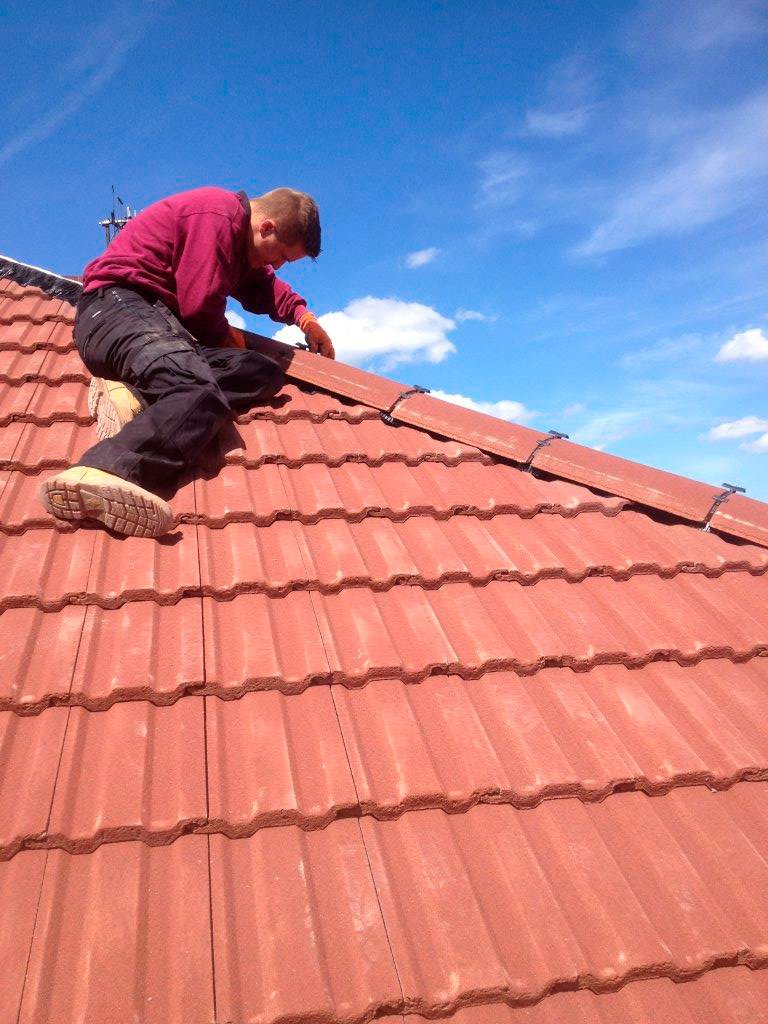In recent years, there has been a growing emphasis on sustainable building practices, and roofing is no exception. As concerns about climate change and environmental degradation continue to rise, homeowners and businesses alike are increasingly turning to green roofing solutions as a way to reduce their carbon footprint, lower energy costs, and create healthier living environments. In this comprehensive guide, we’ll explore the various types of green roofing solutions available, including living roofs, cool roofs, and other eco-friendly options, to help you make an informed decision for your next roofing project.
The Rise of Green Roofing:
Green roofing, also known as eco-roofing or sustainable roofing, refers to the practice of incorporating vegetation, renewable materials, and energy-efficient technologies into roof design and construction. The primary goals of green roofing are to improve energy efficiency, manage stormwater runoff, enhance air quality, and promote biodiversity. With the increasing awareness of environmental issues and the desire for more sustainable living spaces, green roofing has gained popularity across residential, commercial, and institutional sectors.
Types of Green Roofing Solutions:
1. Living Roofs:
Living roofs, also called vegetated roofs or green roofs, are perhaps the most visually striking and environmentally beneficial type of green roofing solution. These roofs are covered with a layer of vegetation, which can range from grasses and sedums to shrubs and even trees. Living roofs offer numerous benefits, including:
- Improved Insulation: The vegetation layer acts as natural insulation, reducing heat transfer into the building during the summer months and retaining heat in the winter, leading to lower energy consumption and reduced heating and cooling costs.
- Stormwater Management: Living roofs absorb rainwater, reducing stormwater runoff and alleviating pressure on stormwater infrastructure. They can also help filter pollutants and improve water quality.
- Biodiversity: Living roofs provide habitat for birds, insects, and other wildlife, promoting biodiversity in urban areas and supporting local ecosystems.
- Aesthetic Appeal: Living roofs add beauty and natural greenery to rooftops, creating visually appealing spaces for relaxation and recreation.
2. Cool Roofs:
Cool roofs are designed to reflect sunlight and absorb less heat than traditional roofing materials, helping to reduce the “heat island” effect in urban areas and lower indoor temperatures. Common cool roofing materials include:
- White Membranes: Reflective white membranes, such as PVC or TPO, are highly effective at reflecting sunlight and reducing solar heat gain.
- Cool Roof Coatings: Specialized coatings applied to existing roofs can improve solar reflectance and thermal emittance, prolonging the lifespan of the roof and reducing energy costs.
- Metal Roofs: Light-colored metal roofs, particularly those with reflective coatings, can effectively reflect sunlight and maintain cooler temperatures.
3. Solar Roofing:
Solar roofing integrates photovoltaic (PV) panels or solar shingles into the roof structure, allowing homeowners to harness the power of the sun to generate electricity. Solar roofing offers several advantages:
- Renewable Energy Generation: Solar roofing systems produce clean, renewable energy, reducing dependence on fossil fuels and lowering carbon emissions.
- Energy Savings: By generating electricity on-site, solar roofs can significantly reduce electricity bills over time, especially in regions with abundant sunlight.
- Long-Term Investment: While the upfront cost of solar roofing may be higher than traditional roofing materials, the long-term savings and potential for energy independence make it a worthwhile investment.
4. Recycled and Sustainable Materials:
Another eco-friendly option for roofing is the use of recycled and sustainable materials, such as reclaimed wood, recycled metal, and recycled rubber. These materials offer environmental benefits by reducing the demand for virgin resources and minimizing waste. Additionally, sustainable roofing materials are often durable, energy-efficient, and aesthetically pleasing, making them a popular choice for environmentally conscious homeowners.
Conclusion:
Green roofing solutions offer a multitude of benefits for both property owners and the environment, from reducing energy consumption and mitigating urban heat island effects to improving air quality and supporting biodiversity. Whether you’re considering a living roof, a cool roof, solar roofing, or sustainable materials, incorporating eco-friendly practices into your roofing project can help create a more sustainable and resilient building envelope. By investing in green roofing solutions, you can not only lower your environmental impact but also enjoy long-term savings, enhanced comfort, and a healthier living environment for years to come.


